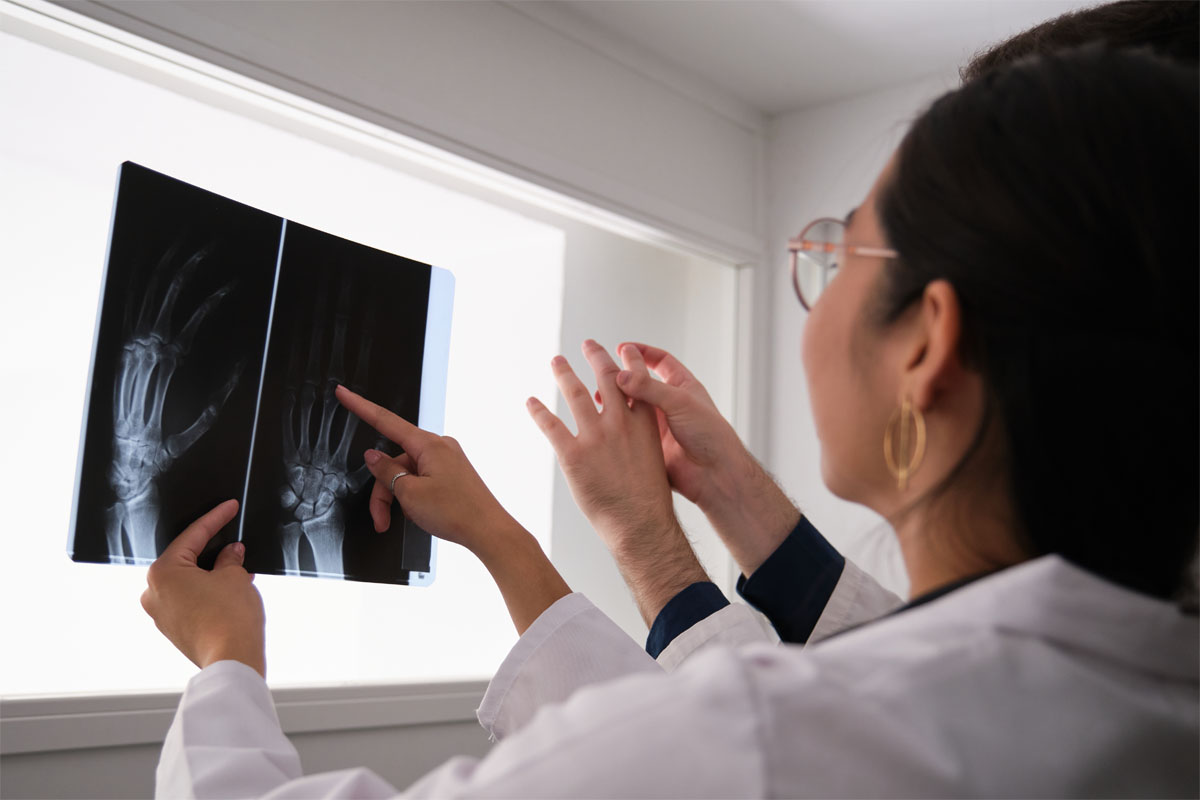What is Rheumatoid Arthritis?

Rheumatoid arthritis causes joint inflammation and soreness. It occurs when the immune system isn’t working properly and assaults the joints lining, referred to as the synovium. The ailment commonly impacts the hands, ankles, or knees and typically the same joint on each side of the body, like both ankles or both knees. But oftentimes RA causes issues in other parts of the body additionally, like the heart, eyes, and cardiovascular system and/or the lungs.
For mysterious reasons, men come down with RA less than women, and it typically develops in middle age. Having a relative with RA increases the chances of developing RA.
Causes
In healthy people, the immune system fights aggressors, like bacteria and viruses. With an autoimmune ailment such as RA, the immune system misreads the body’s cells for foreign aggressors and releases inflammatory chemicals that fight those cells. In RA, it fights the synovium, the tissue lining surrounding a joint that creates a fluid to help the joint move streamlined. The inflamed synovium turns thicker and makes the joint area feel sensitive and painful and appears red and swollen, and moving the joint could be challenging.
Researchers are unsure why people fall victim to RA. They believe these people might have certain genes that are initiated by a trigger in their setting, like bacteria, a virus or emotional or physical stress or some other outside element.
Symptoms
In the initial stages, people with RA might not see swelling or redness in their joints, but they may feel tenderness and pain.
These symptoms are indicators to RA:
- Joint pain, swelling, stiffness, or tenderness lasting 6 weeks or longer.
- Morning inflexibility lasting for thirty minutes or longer.
- The same joints on each side of the body are impacted.
- One or more than one joint is impacted.
- Smaller joints (wrists, particular joints in the feet and hands) are usually impacted first.
A lot of people that have RA get very fatigued and some might have a low-level fever. RA symptoms might reoccur. Having a lot of pain and other symptoms is known as a flare. These can last from days to months.
Health Effects
- Eyes. Inflammation, dryness, pain, redness, light sensitivity, and difficulty seeing properly.
- Mouth. Dryness and inflammation of the gums, soreness, or infection.
- Skin. Rheumatoid nodes — small lumps under the skin on bony areas.
- Lungs. Irritation and scarring that can result in shortness of breath and lung disease.
- Blood vessels. Tenderness of blood vessels that can result in damage of the nerves, skin and other organs.
- Blood. A below-normal number of red blood cells.
- Heart. Inflammation could damage the heart muscle and the surrounding region.
Painful joints also make it challenging to exercise, resulting in weight gain. Being overweight could make people with RA are prone to develop heart disease, high cholesterol, diabetes, and high blood pressure.
Diagnosis
Receiving an accurate diagnosis sooner than later is the first step to successfully treating RA. A doctor with specialized training for treating arthritis (referred to as a rheumatologist) is the right person to make a proper diagnosis, utilizing medical history, a physical exam and lab tests.
Medical history. The doctor is going to inquire about joint symptoms (tenderness, pain, stiffness, moving challenges), when they began, if they reoccur, their severity, what movements make them worse or better and if relatives have RA or other autoimmune disease.
Physical exam. The rheumatologist is going to look for joint tenderness, inflammation, warmth and painful or restricted movement, lumps under the skin or a low-level fever.
Blood tests. The tests are going to look for blood proteins and inflammation that are related to RA:
C-reactive protein (CRP) levels and Erythrocyte sedimentation rate (ESR) are indicators for inflammation. A high ESR or CRP mixed with other indications to RA helps come to the diagnosis.
Rheumatoid factor (RF) are antibodies identified (in due course) in about eighty percent of individuals that have RA. Antibodies to cyclic citrullinated peptide (CCP) are identified in sixty to seventy percent of individuals with RA. Nevertheless, they’re also identified in individuals that don’t have RA.
Imaging tests. RA can cause the tips of the bones within a joint to erode. X-rays, ultrasounds, or MRI scans could search for erosions. However, should they not turn up on the initial tests that might mean RA is in the beginning stages and hasn’t impaired bone yet. Imaging outcomes can also indicate how well treatment is progressing.
Treatment
The objectives of RA treatment are to:
- Hinder inflammation or decrease it to the lowest possible degree.
- Ease symptoms.
- Hinder joint and organ damage.
- Optimize function and overall health.
- Decrease long-term issues.
To fulfill these objectives, the rheumatologist is going to follow these tactics:
- Early, aggressive treatments to decrease or hinder inflammation as fast as possible.
- Targeting remission or another objective to work toward little or no signs or symptoms of lively inflammation.
- Strict control to keep inflammation at the lowest degree possible.
Chaparral Winds Offers The Finest Retirement Living In Surprise, Arizona
Chaparral Winds is a retirement facility in Surprise, Arizona offering assisted living, independent living, and memory care services. For more information about our senior living facility, SLS Communities or to schedule a tour, please call us today at 623-343-4125.

